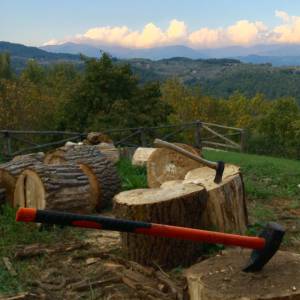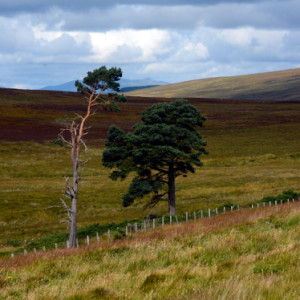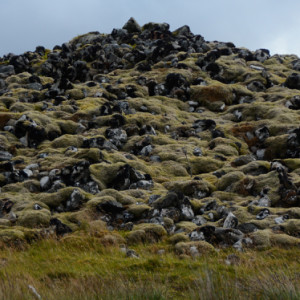Helmsdale circle to Hope, Durness, Tongue
I started writing this and then it became too involved. This is where I got up to. So I'll let the photos speak for themselves. There are a fair few extras.
This was an amazing day. Already my strange preconceptions about the north-east coast of Scotland – above Inverness – had been blown away. I had imagined a hard coast of bleak cove settlements interspersed with lonely cliffs and a dark and brooding sea. Instead Dornoch and Fleet Loch suggested an enclave of Devon or Dorset. Further up the coast the broad coastal strip was rich farmland until it narrowed after Golspie and was then given over to more straightened crofting settlements.
Then we began to venture inland – first from our ghillie’s bothy four miles above Helmsdale as we drove along the beautiful Helmsdale River – the close valley/strath opening out into a huge expanse of golden waves or undulations (the coarse and ubiquitous moorland deer grass – actually a sedge (Trichoforum cespitosum gives this effect at this time of year as it begins to die back from the tip).
We went by an old hill fort, then strange cairns of moss-covered rock in the washed-out grey ruins of a cleared pine plantation, two Scots pines surrounded by the stretching-away to a far far horizon of golden ochres, sienas, broad strokes of heather, so different if in the hurrying shade of the rushing ranks of clouds coming in from the south west or brilliant in the dashing sunlight. The single track train line looked straight from the Thirty Nine Steps, and with it that sense that one was observed, noted, eyed up and followed with more than passing interest as an intruder, or interloper, or presence that might disrupt this kingdom of private rivers, grouse moors, rough shooting and stalking rights.
We went by the tin sheds at Badanloch Loch painted in a livery of light curd yellow, windows opicked out in dark green and the roofs a the oxide red of rural Scotland. The wind was whipping up wavelets on the broad expanse of the water that seemed to meld with the sky and moor – a continuum of vastnesses each vying to outdo the other. At the end of the twin Loch Nan Clar a bright strip of dazzling pale orange beach, the sky translucent green-pale blue in the entering stream, the darker lines of purple moor grass recding to a distant ridge and hills, the faintest of brighter greens where the moor broke out into a brief redemption of inby farmland.
More beach and dark swathes of imported forest, strange mountain shapes rising on the horizon: jagged castelllations, a sweeping updraught of rock, too distant to fathom. That promise of redemption is a whitewashed hotel of such solitariness. It stands choked in loneliness beneath the scimitar ridge of Biod Eag.
The eight-bedroomed Garvault is for sale for £260,000 and is described as ‘a charming licensed Hotel in a tremendous and unique trading location within rural Sutherland.’ It is certainly unique, standing as it does between the tin town of Kinbrace with its old Mission House and the road junction at the tiny hamlet of Syre with its tin chapel and hotel. A place to hole up in winter on the run from trouble, to sip whisky and stare out at the desolation of the short days before the dark and gale and sheer immensity of the arching sky embrace obliterate past and future in a featureless present. Forbes lists it as one of the top most isolated hotels in the world.
This is the edge of the Flow Country and this single track route is a priority logging road, not that we saw a lorry and maybe two vans and a car. The Flow Country (why Flow? – ‘a northern term for any flat, deep and wet bog’) is the largest expanse of blanket bog in Europe. Vandalised by pine forestry for grants and tax relief in the 1980s it is now being treated with greater respect. It is, as the Nature Conservancy Council report of 1988 says, ‘one of the most extensive examples of near-natural landscape still surviving in Britain, and not far removed from the original primeval scene before early man began to exert a significant influence on our environment.’ (p. 42) That is, as long as it hasn’t been drained and forested over with pine plantations that after 10-15 years completely destroy the vegetation that makes up the blanket bog.
You do wonder what kind of yields the forest plantations give. We passed one large block under the south side of Rimsdale Hill that had suffered badly from windthrow on the stretches along the road. We stopped for coffer from the flask by the little Loch Ross with its islets of low scrubby trees. We’d hoped to spot a Black or Red-Throated Diver but had no luck. Maybe the breeding pairs had already moved on or maybe this lochan was just to near the road.
(Those trees on those islets – probably willow, silver birch and rowan did make me wonder about the naturalness of the treeless state of the country. For where grazing animals are excluded and the land is not deep blanket bog it seems that scrubby trees will establish themselves. This was the case also inside the deer fence of the Forest block under Rimsdale Hill.
(You wonder about the names in the Flow Country – Helmsdale and Rimsdale, Palm Loch, Ben Hope and Loyal. Is this just bastard Englishisms or something else. Somewhere a sign informed us that Hop came from the norse Hop, for ‘bay’. And my own travels in Norway made me think that the very English sounding ‘dale’ probably comes from the norse for valley ‘dal’. Ben Loyal, often known as the Queen of the Scottish Mountains, is not loyal but legal, deriving from the Norse laga-fjall meaning ‘legal hill’ (according to the Daily Record http://www.scotlandnow.dailyrecord.co.uk/lifestyle/peak-week-ben-loyal-often-6781451).
We began a slow descent from the Flow Country and entered the green rough grazing of farming country and entered Strath Naver with a river of the same name flowing to the north coast. At the road junction is the tiny hamlet of Syre, (Saghair in Scottish Gaelic) which is dominated by one of the lodges of the Syre Estate and boasts a small tin chapel with a red roof. The river, the Naver, is the biggest in Northeern Scotland and yields around 500 salmon and grisle a year to fly fishfolk who pay handsomely for the privilege. Apparently its rivals the Helmsdale in its exclusivity and is a ‘very private river’. http://www.trout-salmon-fishing.com/scotland-river-naver.htm
And that feeling of being watched. When just about everyone in the strath is on the Estate payroll. And they have two river bailiffs ‘who patrol the river’. If you can get a beat on the hallowed water it’ll cost in the region of £1,000 per week in February for one rod and lodge accommodation with other stuff on top.




Comments
Sign in or get an account to comment.


